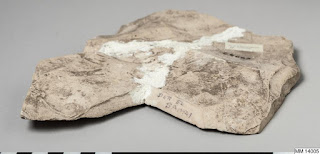Nursing woman
- Period:
- Old Kingdom
- Dynasty:
- Dynasty 5
- Reign:
- reign of Niuserre or later
- Date:
- ca. 2420–2389 B.C. or later
- Geography:
- From Egypt; Probably from Memphite Region, Giza, Tomb of Nikauinpu
- Medium:
- Limestone, paint traces
- Dimensions:
- h. 10.5 cm (4 1/8 in)
- http://www.metmuseum.org/art/collection/search/543905
- This woman sits on the ground with one knee raised. Against the hammock of cloth formed by her skirt stretched over her knee she holds a child whose yellow skin indicates she is a girl. With one hand the woman holds the child's head, while with the other she offers her breast to the child. The child's head is tilted back, either to gaze at the woman as nursing children may do, or perhaps in frustration as she cannot reach the breast. Behind the woman a red-painted and therefore male child kneels and pulls her second breast beneath her arm so that he can nurse, too.
Among Old Kingdom serving statuettes, women with chldren are a non-standard subject; indeed this is the only example depicting nursing. Serving women with children are seen more often in reliefs: in one tomb a child clings to his mother's back while she grinds grain, and nearby another woman nurses a chlld while she tends baking bread. The fact that the woman in the statuette here wears a white kerchief as do so many of the women in food preparation tasks, presumably to keep flour and such from their hair, may imply that this woman was involved in such tasks when she takes a moment to care for the children.











































